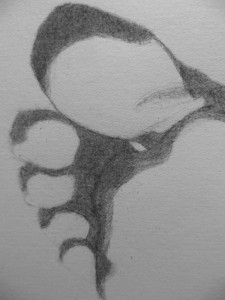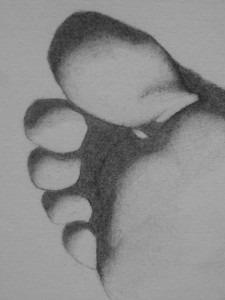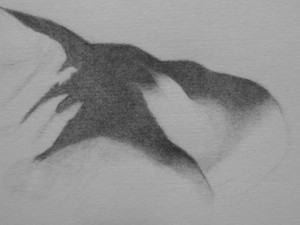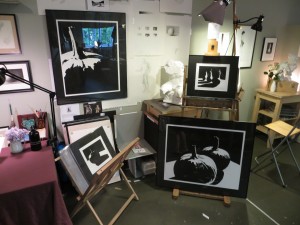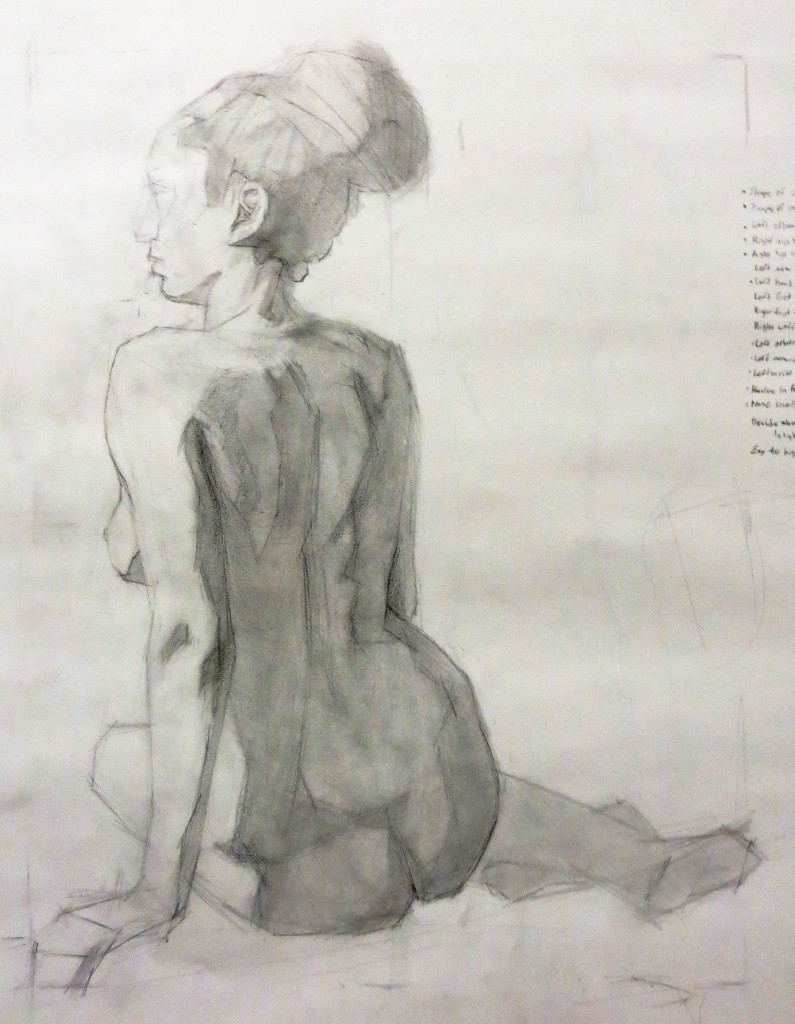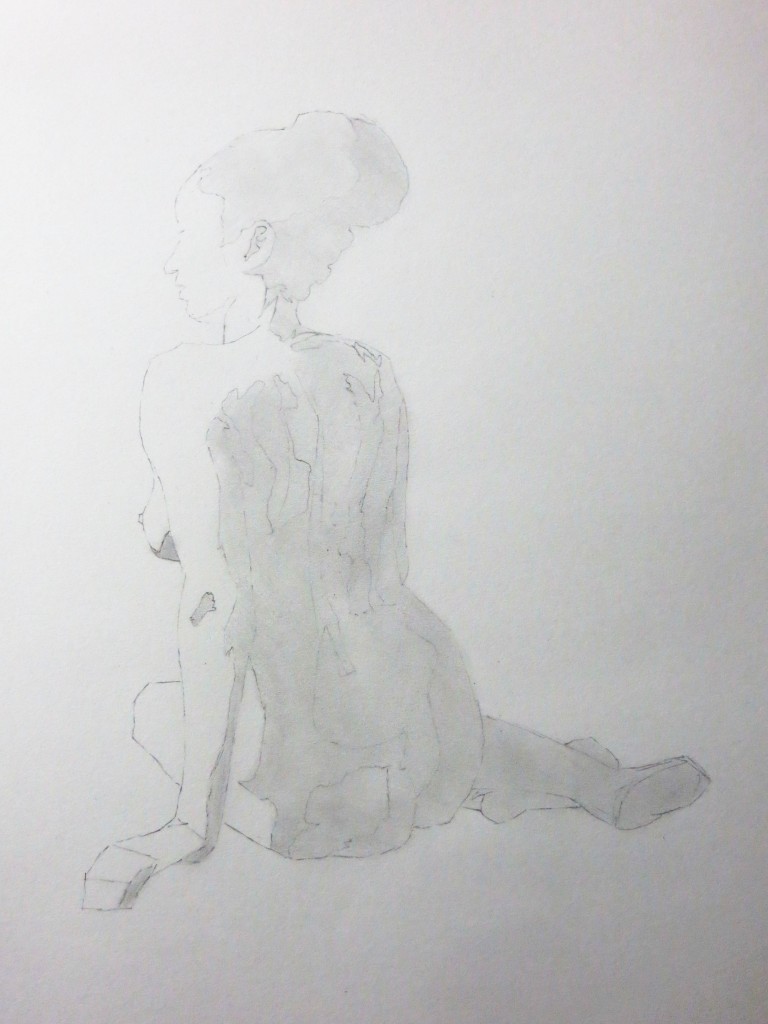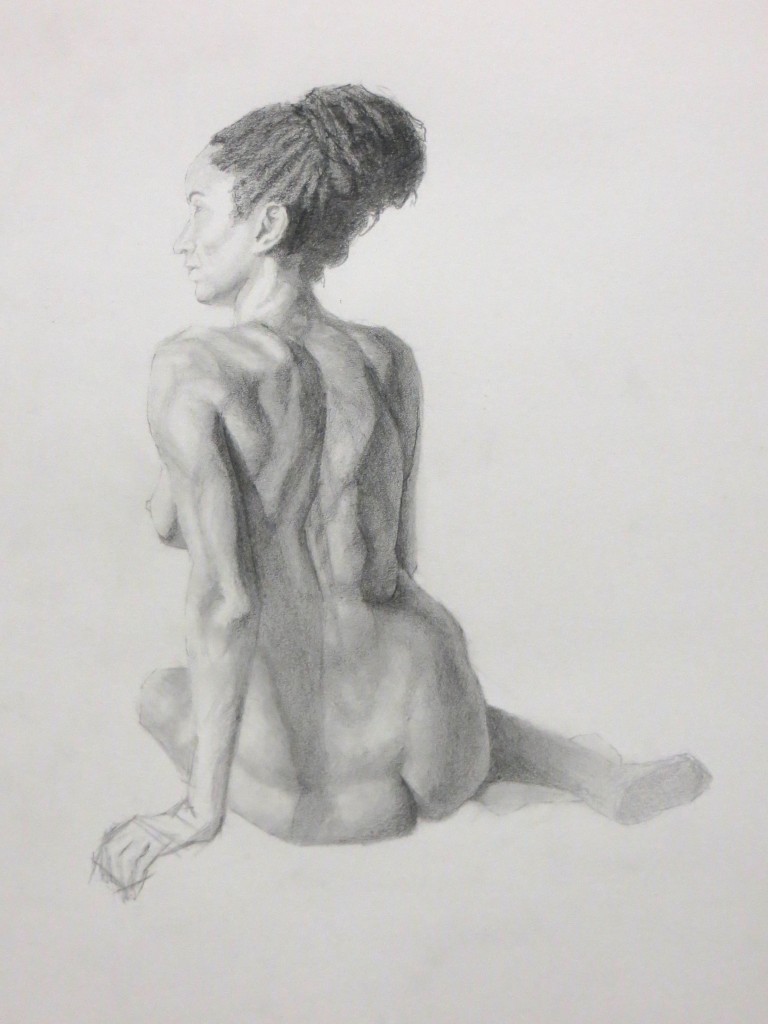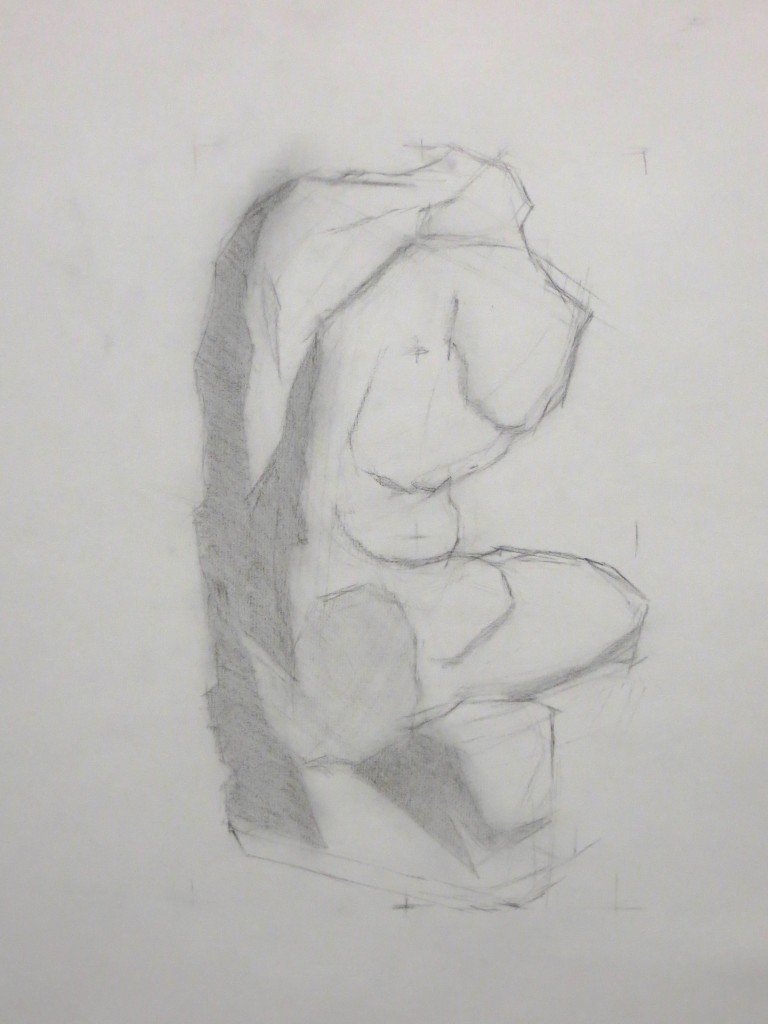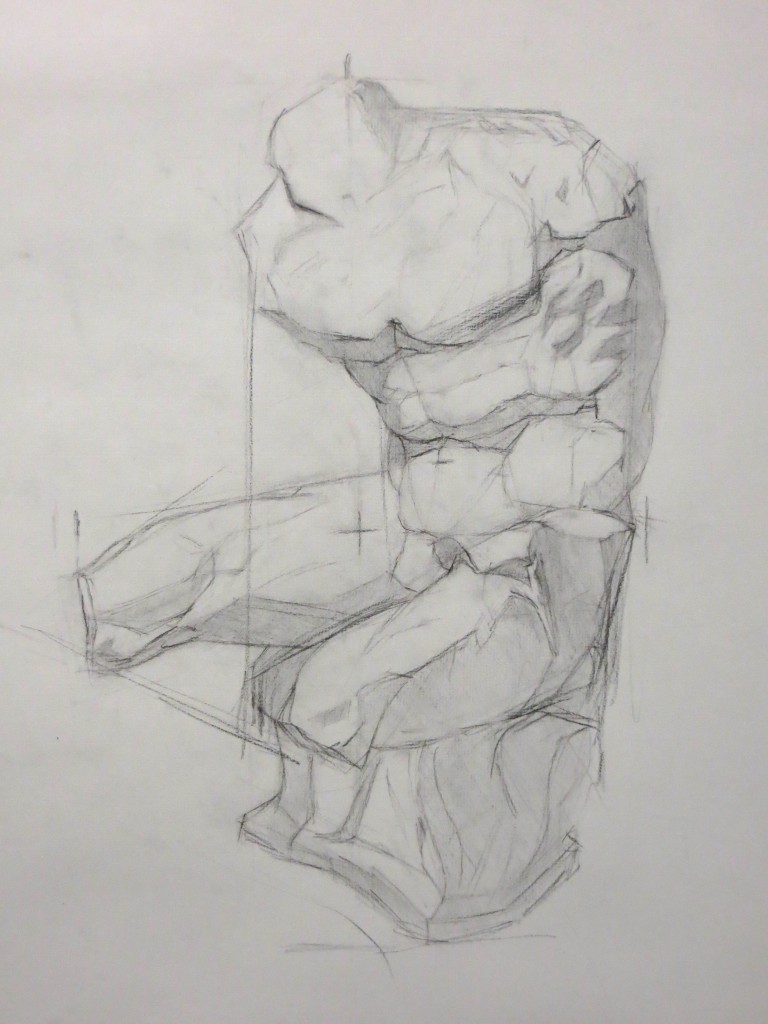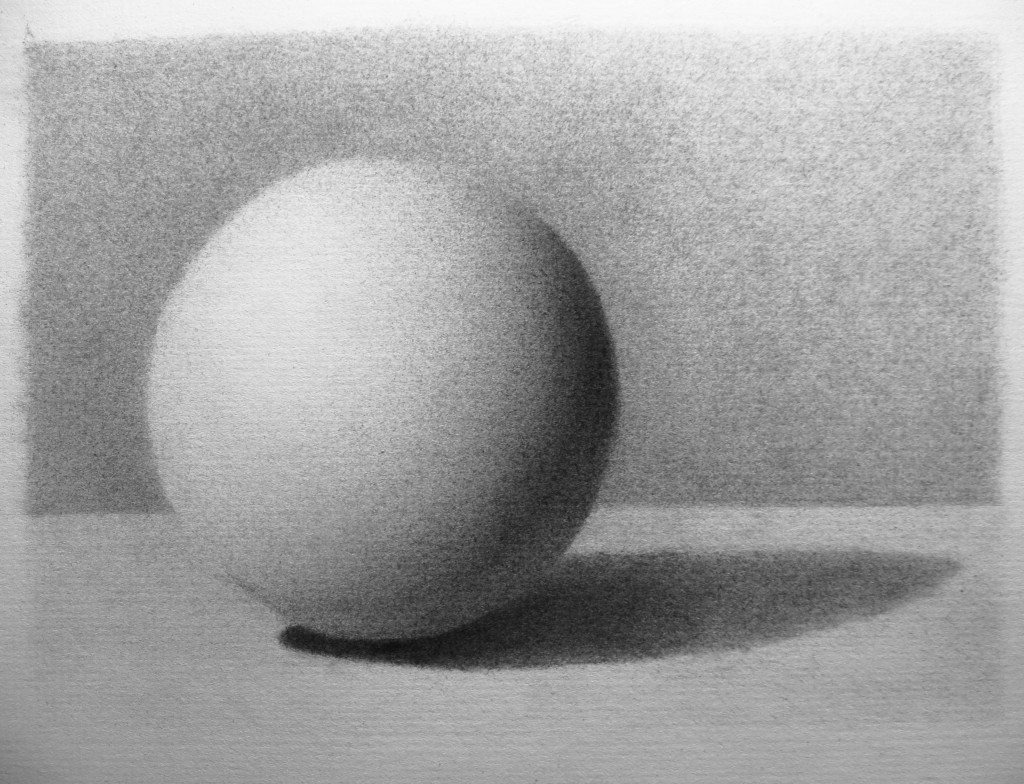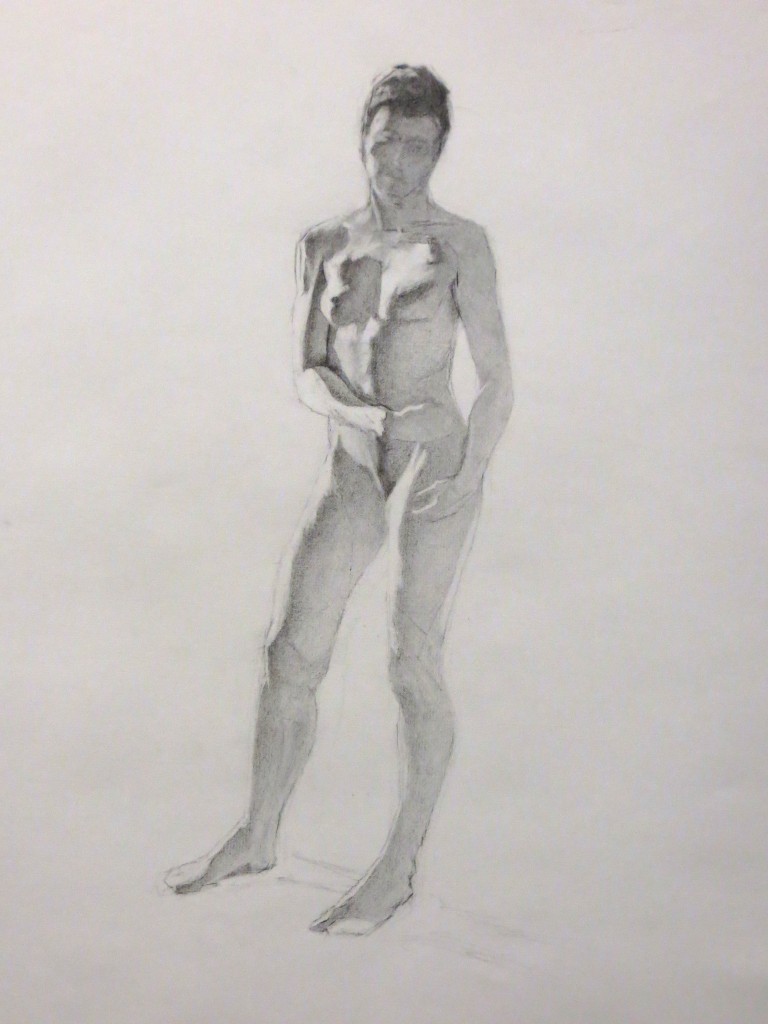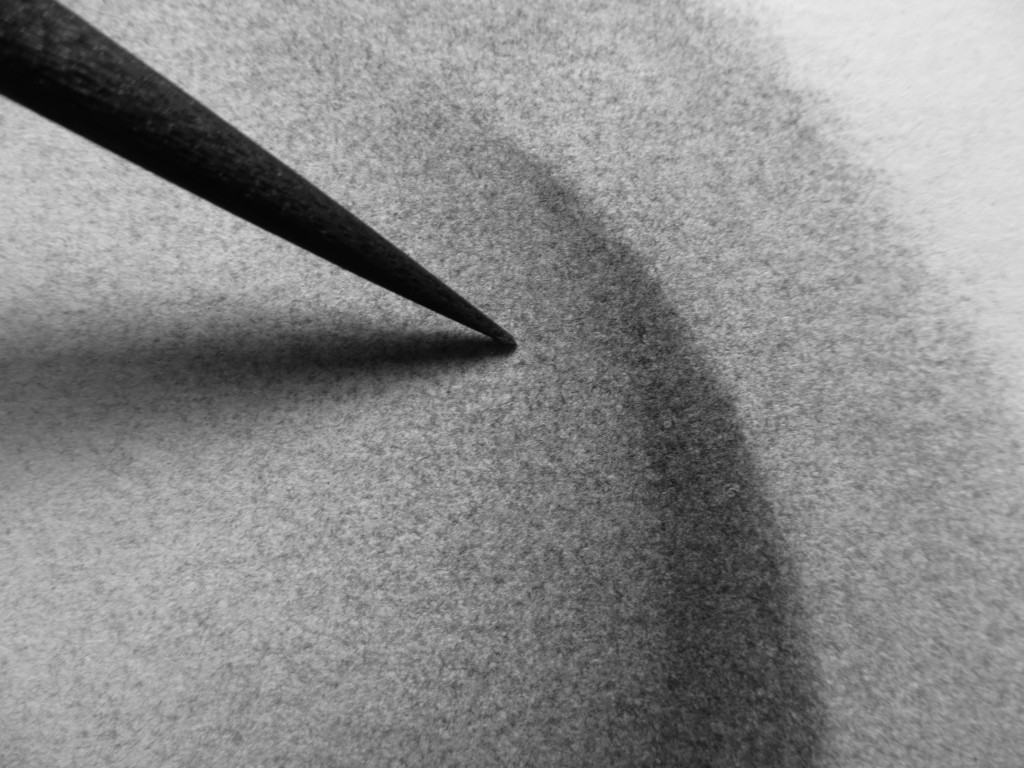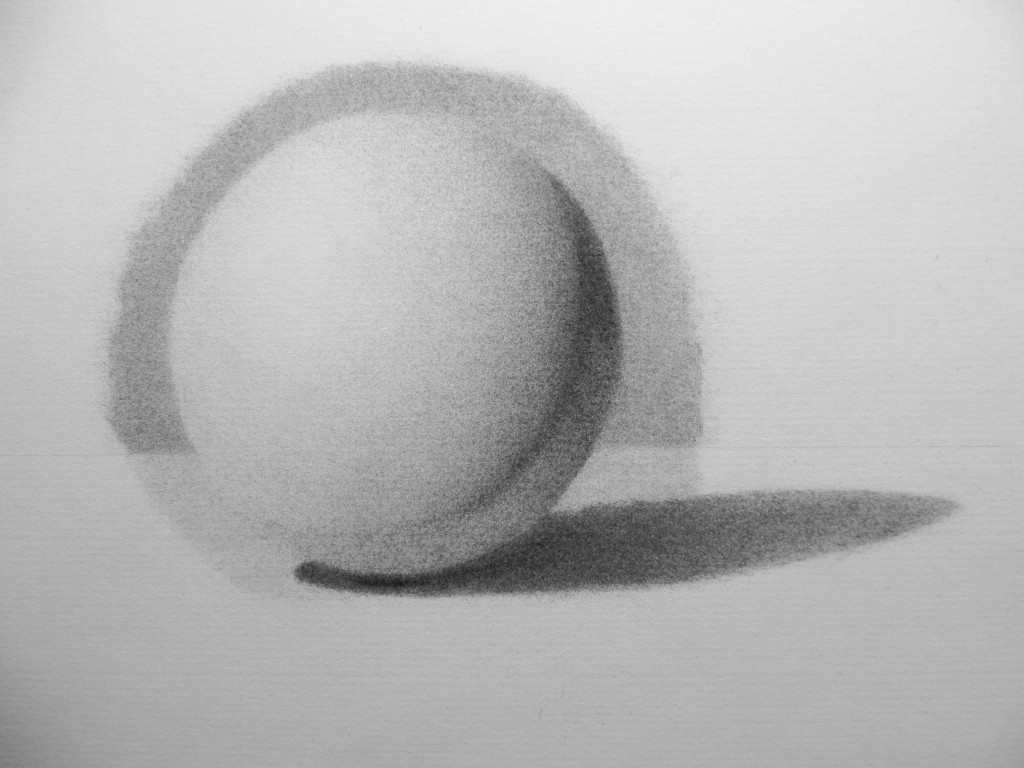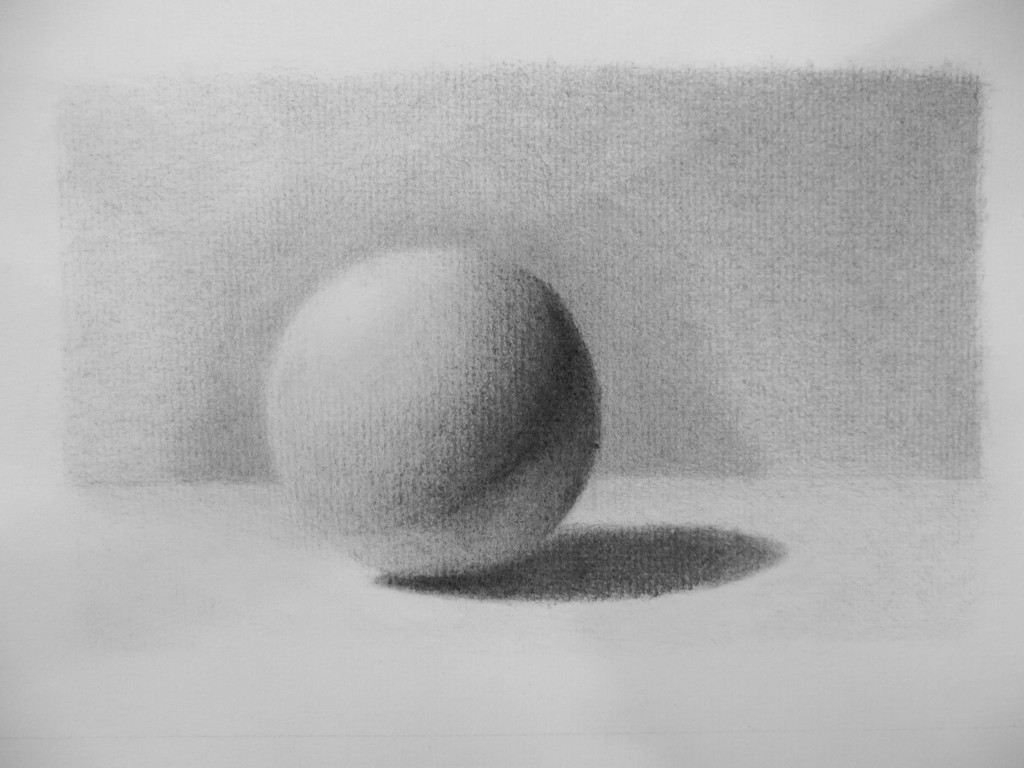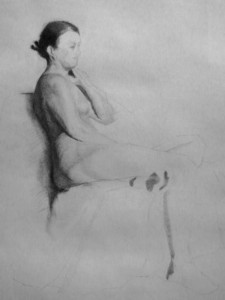Now that I’m able to render smooth tones in charcoal, I’ve started on a new Bargue plate copy. The plate I am copying is from the Charles Bargue Drawing Course which is a set of plates used to train classical artists in the late nineteenth century. The course begins with simple drawings from casts, initially focusing on individual body parts. It progresses to portraits, torsos, and finally full figures. Vincent van Gogh copied the complete set of plates in 1880 and 1881 and then again in 1890.
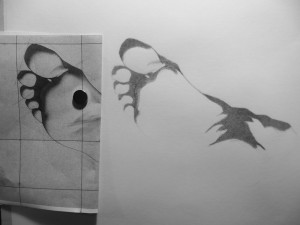
I’m using my magnetic drawing board to hold a copy of the Bargue plate while I draw. My goal here is to precisely locate all of the edges and shadow edges and then build up a uniform base level of shading in all of the shadow regions. At this point, I am not using intermediate tones to convey three dimensional form. This will come later once I am sure of the shapes and their locations.
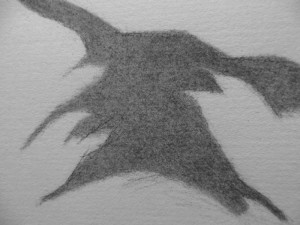
Here I am going back to clarify the locations of the core shadows before turning form. All of the shadow regions are still flat.
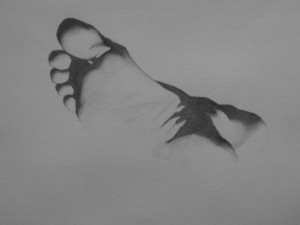
Here’s an overview of the plate shortly after starting to turn form. When the plate is finished, most of the transitions will be softer and very little will be pure white.

